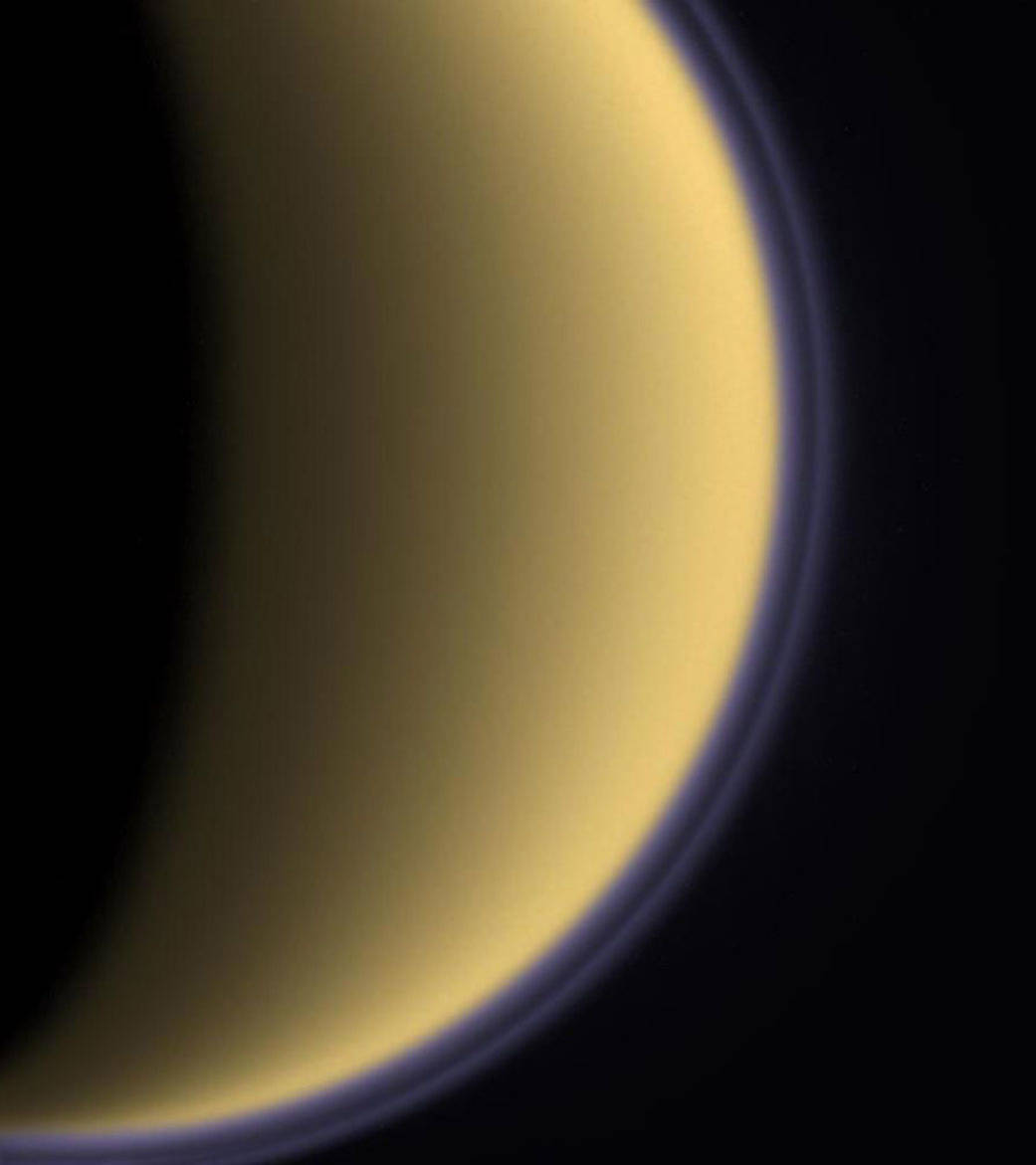Encircled in purple stratospheric haze, Saturn’s largest moon, Titan, appears as a softly glowing sphere in this colorized image taken on July 3, 2004, one day after Cassini’s first flyby of that moon. Titan has a dense atmosphere composed primarily of nitrogen with a few percent methane. The atmosphere can undergo photochemical processes to form hazes.
Images like this one reveal some of the key steps in the formation and evolution of Titan’s haze. The process is thought to begin in the high atmosphere, at altitudes above 400 kilometers (250 miles), where ultraviolet light breaks down methane and nitrogen molecules. The products are believed to react to form more complex organic molecules containing carbon, hydrogen and nitrogen that can combine to form the very small particles seen as haze.Image Credit: NASA/JPL/Space Science Institute + View More Cassini Images+ View Cassini Raw Images
1 min read





























